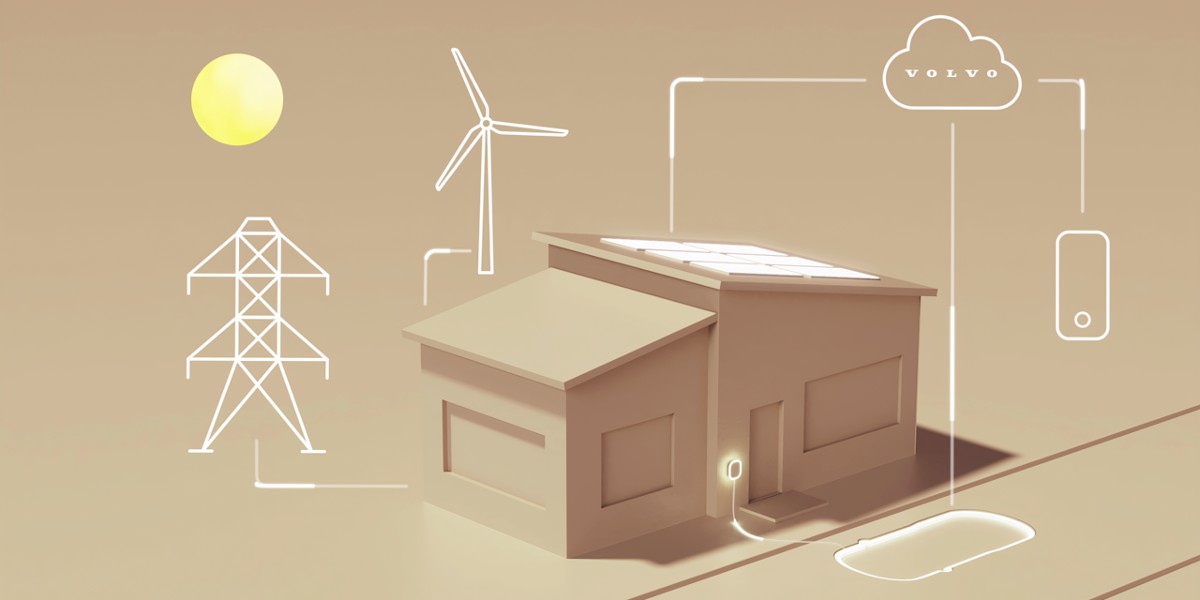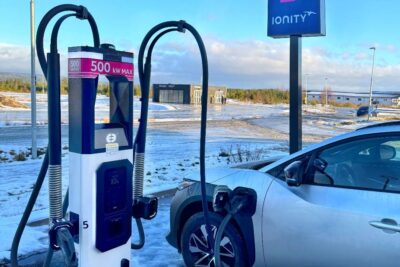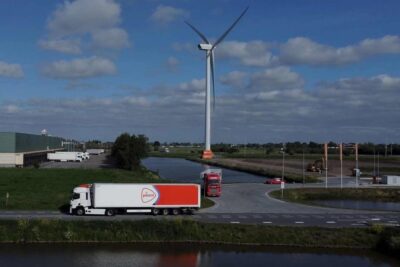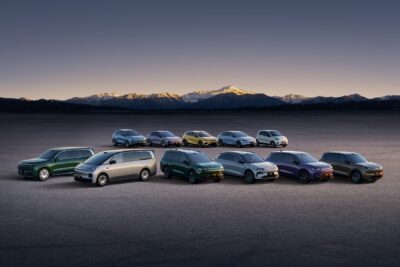Volvo EX90 to support bi-directional charging
Volvo will be relying on bi-directional charging in a big way in the future. The first model from the Swedes to feature this technology will be the upcoming EX90 – other models on the new EV platform will also support V2X technology. The system has a special technical feature that significantly expands the possibilities.
While Hyundai-Kia relies on an AC-only solution for its E-GMP models and the new Niro EV, the VW Group has opted for a DC solution for the upcoming bidirectional charging function of its MEB models. The VW solution has advantages in vehicle-to-home applications, since the PV system on the roof or the home storage system, for example, also work with DC. However, simple but effective applications such as the vehicle-to-device function at Hyundai, where any device can be operated with electricity from the battery via an adapter, are not possible.
Volvo has not made such a fundamental decision here for the customer – or rather, the decision is that the customer should have a choice: The EX90 and its upcoming platform brethren will support bidirectional charging via both AC and DC, as Lutz Stiegler, Solution Manager Electric Propulsion at Volvo Cars, explained in an interview with our colleagues at electrive.net. “Our in-car charger is bidirectional by default, so it can charge and discharge at 11 kW,” Stiegler said. “If we were to offer DC only, the onboard charger doesn’t have to be able to do that, so a pure charging function is enough. But via the DC wallbox, which then needs its own inverter, that becomes much more expensive for the customer.”
And here, as can be heard between the lines, there are doubts at Volvo as to whether customers will also accept such an expensive solution on a mass scale. The great advantage of bidirectional charging via vehicle-to-X functions or grid-serving charging would be lost. For the vehicle battery to be able to stabilize the grid, it must be connected to the grid as often as possible – not only at home at the vehicle’s own wallbox, but ideally also during working hours at the employer’s site. Or when charging at a public charging station. All of this requires the widest possible distribution of appropriate charging points. Despite the advantages of a DC solution for the home island solution, Volvo sees a large spread in the more affordable AC area.
Virtual power plants considered conceivable in the future
“Our strategy is that we will offer a normal, relatively inexpensive AC wallbox together with the car, which supports ISO-compliant communication for bidirectional charging,” Stiegler says. “In the future, there will be a complete package for those customers who also want solar and home storage – that will be the DC wallbox.”
For the vehicle, vehicle-to-grid (V2G) and vehicle-to-home (V2H) are equivalent – because the decision is made outside the vehicle whether to keep the electricity in the home or feed it into the grid beyond the grid connection point. It is in these two applications – V2G and V2H – that Volvo sees the greatest leverage and motivation to introduce bidirectional charging. “Vehicle batteries will enable us to make a significant contribution to the success of the energy transition,” Stiegler said. “In appropriately large numbers, vehicles can provide appreciable storage capacity and do so precisely with very high performance.”
If electric vehicles are combined in a pool as a virtual power plant, the e-cars can even be used to offer more than simply compensating for short-term fluctuations. Then the vehicles could even be used as a virtual power plant for a frequency reserve. The Volvo manager is not yet willing to say when such functions will be implemented: “That also depends on the regulations for grid access in the various countries. The car as a mobile energy storage device is not covered in the standards today.”
The Swedish company is also still keeping a low profile in the accompanying announcement, saying, “Initially becoming available in selected markets, bi-directional charging has the potential to help you make your energy utilisation cheaper, more efficient and sustainable,” Volvo wrote. “Paired with smart-charging capabilities coming to the Volvo Cars smartphone app, the Volvo EX90 will allow you to charge your car when demand from the grid and prices are low – usually meaning there are more renewable sources in the energy mix – and save that stored energy to be used later.”
A side benefit of the bidirectional 11-kW charger is that people will be able to charge other e-cars with power from the vehicle’s battery – rather than going the roundabout route with the Schuko charging brick and V2D adapter, as Hyundai-Kia does. Although an adapter is also plugged into the donor vehicle, the normal Mode 3 charging cable can be used with this adapter. A special mode for the donor vehicle still has to be activated in the menu so that it behaves like a wallbox during charging communication. Stiegler states that they have only tested the function with other electric Volvos so far. However, provided other manufacturers adhere to the exact communication standards for AC charging, it should be possible to charge vehicles from other manufacturers in this way.
Volvo will unveil the EX90 on the 9th of November. The vehicle is based on a new electric platform that will later be used in other Volvo models – and with it the standard bidirectional charger.
With reporting by Sebastian Schaal, Germany.





2 Comments